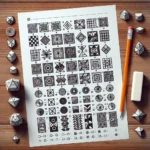Pattern Recognition in IQ Tests: Unlocking the Puzzle of Cognitive Ability
Intelligence Quotient (IQ) tests have long been integral tools in measuring cognitive abilities and intellectual potential. At the heart of many IQ assessments lies a crucial element known as pattern recognition. Mastery of this cognitive skill is not only essential for excelling in IQ tests but also in navigating the complexities of daily life.
Understanding Pattern Recognition
Pattern recognition is the cognitive process of identifying and understanding the regularities and structures in data. It allows individuals to make predictions, understand relationships, and solve problems efficiently. In the context of IQ tests, pattern recognition is fundamental in evaluating a person’s ability to process information, draw connections between concepts, and predict logical outcomes.
Pattern Recognition in IQ Tests
IQ tests are often structured to measure a range of mental faculties including logic, mathematical ability, spatial reasoning, and language skills. Within these areas, pattern recognition plays a pivotal role:
1. Visual Patterns: These are sequences or arrangements in pictures or shapes where examinees must identify the underlying rule. Successful identification can mean deciphering a change in color, shape, size, or orientation across a series of images.
2. Numerical Patterns: Numerical sequences require test-takers to find the relationship between numbers. Recognizing these patterns involves understanding arithmetic operations and their application to predict the next numbers in the sequence.
3. Verbal Patterns: In this case, pattern recognition involves linguistic abilities, such as understanding word sequences and relations, synonyms and antonyms, or completing sentences in a logical manner.
4. Logical Sequences: Logical reasoning questions demand the identification of patterns in sequences of ideas or abstract concepts. Here, individuals are tasked with discerning the progression of a series based on rules of logic.
The Importance of Pattern Recognition
The significance of pattern recognition extends beyond IQ tests. This cognitive skill is vital in various aspects of everyday life, from interpreting social cues to making scientific discoveries. A strong capability in pattern recognition is associated with better problem-solving skills, faster learning abilities, and a more adept approach to new and complex situations.
Enhancing Pattern Recognition Abilities
For individuals seeking to improve their pattern recognition skills, regular practice is key. Engaging in activities such as playing puzzle games, learning a musical instrument, or even coding can help sharpen this cognitive ability. Consistent exposure to various types of patterns and sequences in different contexts enhances the brain’s proficiency in identifying and understanding new patterns.
Conclusion
Pattern recognition is an instrumental component of IQ tests, emblematic of an individual’s cognitive prowess. Deciphering the sequences and structures within visual, numerical, verbal, and logical challenges are indicative of an examinee’s overall intellectual capacity. In recognizing the impact of pattern recognition on IQ scores and daily life, it becomes clear why cultivating this skill is so valuable. With continuous practice and exposure, anyone can improve their pattern recognition abilities and, thus, their potential to succeed in all manner of intellectual pursuits.

